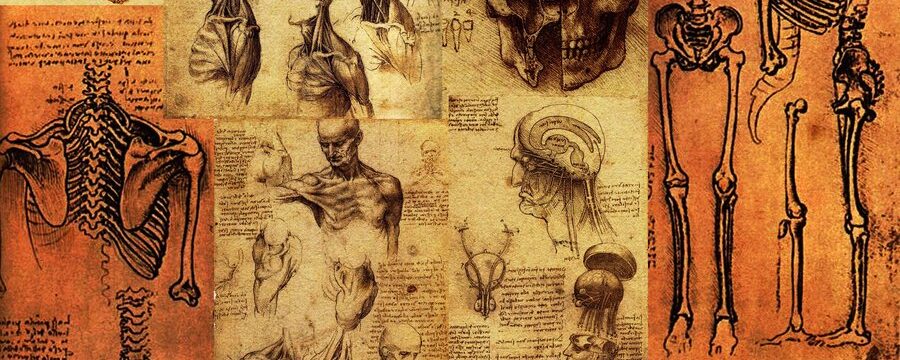Identifying Data:
Full Name: RJ
Address: St. Alban, NY
Date of Birth: xx/xx/1990
Date & Time: 2/10/2022
Source of Information: Self
Reliability: Reliable
Chief Complaint: “I’m always thirsty.” x 3 months.
History of Present Illness:
31 y/o male with no previous medical history presents for annual physical exam, c/o increased thirst and urination for 3 months. He reports drinking 2 liters of water daily and still feels thirsty. Patient has been taking Metamucil for the past 2 months to help alleviate symptoms. Patient states he was trying to lose weight by eating healthier. Patient reports 47 lb weight loss over the past 2 months (240lb – 193lb). Denies dysuria, hematuria, abdominal pain, decreased appetite, weakness, fatigue, dizziness, palpitation, and chest pain.
Past Medical History:
None
Past Surgical History:
Denies past surgical history
Medication:
Metamucil: 1 scoop in 8oz of water, once daily
Allergies:
NKDA
Family History:
Mother: alive, diabetes mellitus, hypertension, anemia
Father: alive, hypertension
Brother: alive, ADHD
Denied family history of substance abuse
Social History:
Habits: Denies tobacco and illicit drug use. Drinks 2 bottles of beer per week.
Travel: No recent travel
Marital History: Single
Sexual History: Sexually active with girlfriend. Denies history of STD
Occupation: Works at post office
Home: Living with girlfriend
Diet: Reports that he consumes a balanced diet, has been eating more lean meat and vegetables, and less carb in the past 2 months
Exercise: Reports that he doesn’t exercise regularly
Review of System:
General – Admitted to recent weight loss. Denied decreased appetite, fatigue, fever, and night sweats
Skin – Admitted to dryness of skin. Denied moles, change of skin texture, sweating, itchiness.
Head – Denied headache, light-headedness, recent head trauma.
Eyes –Denied visual changes.
Ears – Denied tinnitus, deafness, pain, discharge, or use of hearing aids.
Nose – Denied discharge, obstruction, epistaxis, loss of smell, itchiness.
Mouth/throat – Denied sore throat, bleeding gum, mouth ulcers, voice change.
Pulmonary system –Denied SOB, sputum, orthopnea, wheezing, hemoptysis, and cyanosis.
Cardiovascular system – Denied chest pain, palpitations, syncope or known heart murmur.
Gastrointestinal system – Denied dysphagia, abdominal pain, constipation, diarrhea, and hemorrhoids.
Genitourinary system – Admitted to urinary frequency. Denied urinary urgency, oliguria and incontinence.
Nervous system – Denied seizure, weakness, sensory disturbances, and memory change.
Musculoskeletal system – Denied joint pain, back pain and muscle pain.
Endocrine system – Admitted to polydipsia. Denied polyphagia, heat intolerance, goiter, or excessive sweating.
Psychiatric –Denied history of depression, anxiety, suicidal thoughts, hallucination, and obsessive/compulsive disorder.
Physical Examination:
Vitals:
Temp: 98.1 F, oral
BP: 129/93, sitting
Pulse: 96, regular
RR: 16/min, unlabored
O2 saturation: 98% room air
Ht: 69 in
Wt: 193 lb
BMI: 28.5
On general inspection, patient is not in acute distress, appears his stated age, well developed and well groomed. AAO x 3. Lungs clear to auscultation bilaterally, heart has regular rate and rhythm. Overall no abdominal findings on his physical exam.
Finger stick was done, and showed glucose of 473.
General – AAO X3. Not in acute distress. Appears his stated age. Well developed and well groomed.
Skin –Warm and dry, good turgor. No lesions, no rashes, no jaundice.
Hair – Average quantity and distribution
Nails – No clubbing, capillary refill <2 seconds on fingers and toes.
Head – Normocephalic, atraumatic, non-tender to palpation throughout
Ears – Symmetrical and appropriate in size. No lesions, masses, trauma on external ears. No discharge or foreign bodies in external auditory canals. TM is pearly white, intact with light reflex.
Eyes – Symmetrical OU. EOMs intact with no nystagmus. No conjunctival injection, pallor, or scleral icterus.
Oropharynx – Moist, no erythema, no exudates, no masses/lesions. Uvula midline and rises symmetrically with phonation.
Neck – Trachea midline. No palpable masses, no thyromegaly. No cervical adenopathy noted.
Chest – Symmetrical, no deformities. Respirations unlabored, no paradoxic respirations or use of accessory muscles noted. Lat to AP diameter 2:1. Non-tender to palpation throughout
Lungs– Clear to auscultation bilaterally, no wheezes/rhonchi/rales.
Heart – Regular rate and rhythm. S1 and S2 are distinct with no murmurs. No splitting of S2 or friction rubs appreciated.
Abdomen –Non-distended. Bowel sounds normoactive in all four quadrants. Non-tender to palpation throughout, no guarding or rebound noted. No CVA tenderness.
Musculoskeletal – Full passive and active range of motion in shoulders, elbows, wrist, hips, knees, and ankles. No soft tissue swelling, erythema, deformities in bilateral upper and lower extremities. Non-tender to palpation. No crepitus noted throughout.
Neurologic – Sensation intact to touch in bilateral upper and lower extremities. Strength 5/5 in bilateral upper/lower extremities.
Peripheral Vascular – Extremities are symmetric in color, size, and temperature. Pulses are 2+ bilaterally in upper and lower extremities.
Labs:
Finger stick blood glucose: 473 mg/dl
DDx:
- Type I Diabetes
- Type II Diabetes
Assessment:
31 y/o male with no past medical history here for annual physical, c/o increased thirst and urination for 3 months, and 47 lb weight loss over the past 2 months. Finger stick showed blood glucose of 473mg/dl. Patient’s symptoms and finger stick result consistent with diabetes.
Problem list:
- Newly diagnosed diabetes
- Encounter for annual physical
Plan:
Newly diagnosed diabetes
- Labs: CMP, Hbg A1C, C-peptide
- Patient is asymptomatic, give 10 units of regular insulin in office
- Repeat finger stick in 45 mins, discharge home if remains asymptomatic
- Start insulin glargine, 20 units, SC, daily at bedtime until next follow up
- Start insulin glulisine, 5 units, SC, twice a day with meal until next follow up
- Educate patient on insulin administration and glucometer use and documentation
- Educate patient on s/s of hypoglycemia and action to eat candy or sweet drink immediately
- Referral to Endocrinologist for evaluation of newly diagnosed diabetes
- Referral to nutritionist for evaluation and education on proper nutrition
- Follow up in 2 weeks for lab report
Encounter for annual physical
- Labs: CBC w/diff, lipid profile, TSH/FT4 reflex, urinalysis, Hep C ab, HIV Ag/Ab screen by CMIA, syphilis


